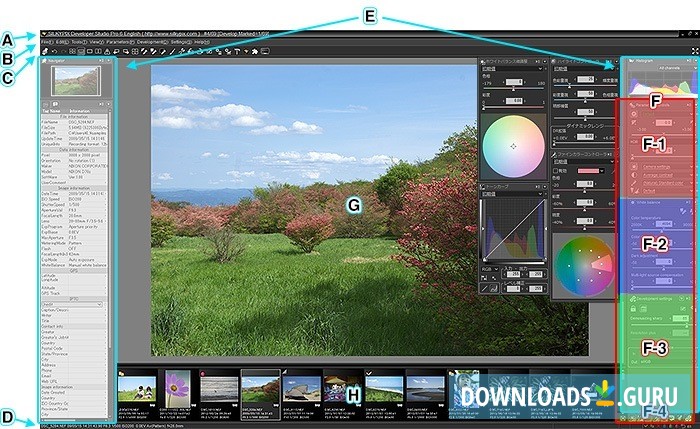

Therefore, your only solutions are to either live with the results (not unreasonable since we do it all the time in relation to our own eyes), attempt to modify the scene to lower contrast (adding or reducing light), or try to fix it afterwards with software techniques as described in the previous thread. (Win) (Mac) (DS3E-0012) Colors are different from that of the JPEG file, which is recorded simultaneously. As an Amazon Associate I earn from qualifying purchases. Is SILKYPIX Developer Studio 3.0 compatible with Mac OS X Leopard (v10.5) (Mac) (DS3E-0079) Trouble Shooting The parameter setup button cannot be used and the parameter cannot be adjusted. Please take the balance of these parameters. This parameter is influenced by 'demosaic sharp' parameter. If you set it 100, SILKYPIX makes full use of these information to increase the image resolution. Use the high precision color tools aiming for the best possible result. If you set it 0, then SILKYPIX does not use the information of low sensitive pixel for increasing resolution but for gradation always. Instead, lighting obviously varies greatly in both intensity and contrast. SILKYPIX Developer Studio Pro 10/10 adds support for the PEN E-P7 and LUMIX GH5II Jnews 0 Comments More info here: .jp/en/ This post contains affiliate links and I will be compensated if you make a purchase after clicking through my links. The powerful Silkypix Developer Studio Pro engine is famous for its color acuracy in both shadows and highlights. And you can expect this often since the world around us is seldom lit with flat low-contrast lighting comfortably within the range of whatever recording medium. SilkyPix Developer Studio is shipped free with the Panasonic L10 digital SLR but is also available as a standalone program. In the case of digital, this can be across the board or on any single color channel (the red channel is particularily troublesome, for example). When that limit is exceeded in either highlights or shadows, image detail is lost or degraded. Every medium, including film, digital sensors, and even our own eyes, has a limit on the dynamic range it can record.

The problem you describe is as old as photography itself. Mitch, as I tried to say in your previous thread relating to this, you haven't discovered anything new.


 0 kommentar(er)
0 kommentar(er)
